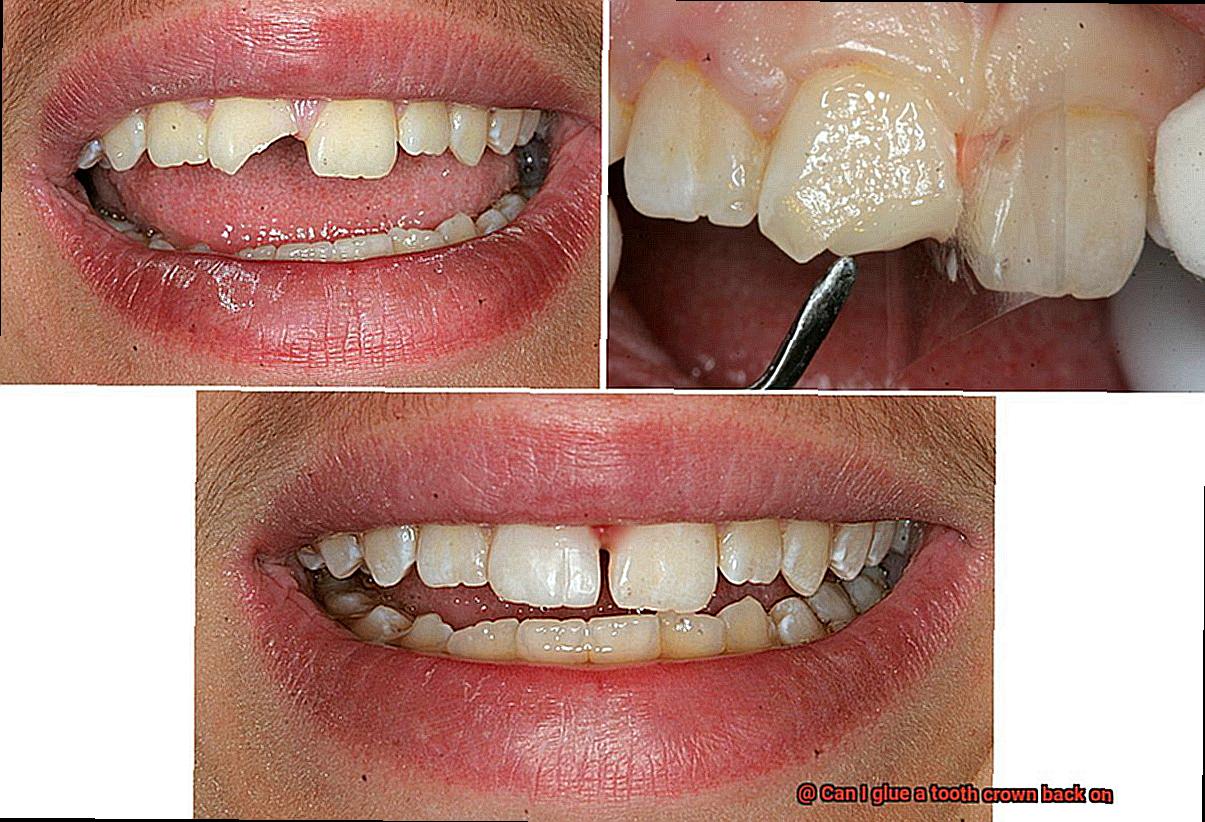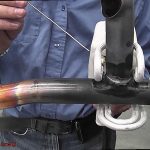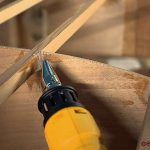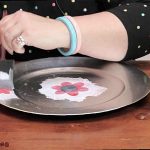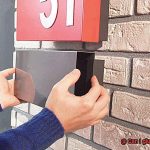Let’s talk teeth today – specifically, what to do when your tooth crown decides to take a little vacation. You know that heart-stopping moment when you feel something weird in your mouth?
Yeah, it’s your trusty crown saying, “Adios.” But don’t panic just yet, my friends.
In this blog post, we’re going to tackle the burning question: can you actually glue a tooth crown back on? Prepare yourself for an adventure filled with casual chatter and expert advice as we unravel the mystery of DIY dental fixes.
So, grab some floss and get cozy because we’re about to embark on a thrilling journey into the world of toothy problem-solving.
What is a Tooth Crown?
Contents
- 1 What is a Tooth Crown?
- 2 Causes of Loose or Fallen Tooth Crowns
- 3 Can I Glue a Tooth Crown Back On?
- 4 Cleaning the Crown and Tooth Before Gluing
- 5 Dental Adhesive or Temporary Cement for Gluing
- 6 Applying the Adhesive or Cement Properly
- 7 Is Gluing a Tooth Crown Back On Permanent?
- 8 Seeking Professional Dental Care for Long-Term Solutions
- 9 Conclusion
A tooth crown, also called a dental crown or dental cap, is a remarkable prosthetic device that can work wonders for damaged or decayed teeth. When a tooth is weakened, broken, or severely worn down, a crown is placed over it to restore its shape, size, strength, and overall appearance. It’s like giving a tooth a brand new lease on life.
Made from a variety of materials like porcelain, ceramic, metal alloys (such as gold or silver), or a combination of these, tooth crowns are custom-made to fit perfectly over the affected tooth. The process involves multiple visits to the dentist. In the first visit, the tooth is prepared by removing any decay and shaping it to accommodate the crown. An impression of the prepared tooth is taken to create a precise mold for the crown. Then, in the following visit, the crown is securely cemented onto the prepared tooth using dental adhesive.
Tooth crowns are incredibly versatile. They not only protect weak teeth from further damage but also restore broken or severely worn down teeth. They even support dental bridges, cover dental implants, and enhance the appearance of misshapen or discolored teeth. It’s like having a superhero cape for your tooth.
With proper care and maintenance, a tooth crown can last for many years. Regular brushing, flossing, and dental check-ups are essential to maintain oral hygiene and ensure the longevity of the crown. However, sometimes crowns can become loose or dislodged due to trauma, poor oral hygiene, teeth grinding (also known as bruxism), or simply natural wear and tear over time.
If you find yourself in such a situation where your crown becomes loose or falls off completely, it’s crucial to seek dental attention immediately. Trying to glue it back on at home may seem tempting but can lead to further complications and an insecure solution. Dentists have specialized tools and materials to properly reattach a loose crown. They will assess the condition of the crown and the underlying tooth, clean and prepare the surfaces, and use dental adhesive to securely bond the crown back in place.
Remember, it’s always best to consult a dentist rather than relying on over-the-counter glue or adhesive products. These products are not designed for dental use and may contain harmful chemicals. Plus, trying to reattach a crown without professional expertise can result in improper positioning, discomfort, or damage to the tooth or crown.
Causes of Loose or Fallen Tooth Crowns
Loose or fallen tooth crowns can be caused by a variety of factors, each with its own potential consequences. Dental decay is a significant culprit, as it weakens the tooth beneath the crown and can lead to instability. Poor oral hygiene practices also play a role, allowing plaque and bacteria to accumulate and weaken the bond between the crown and the tooth.
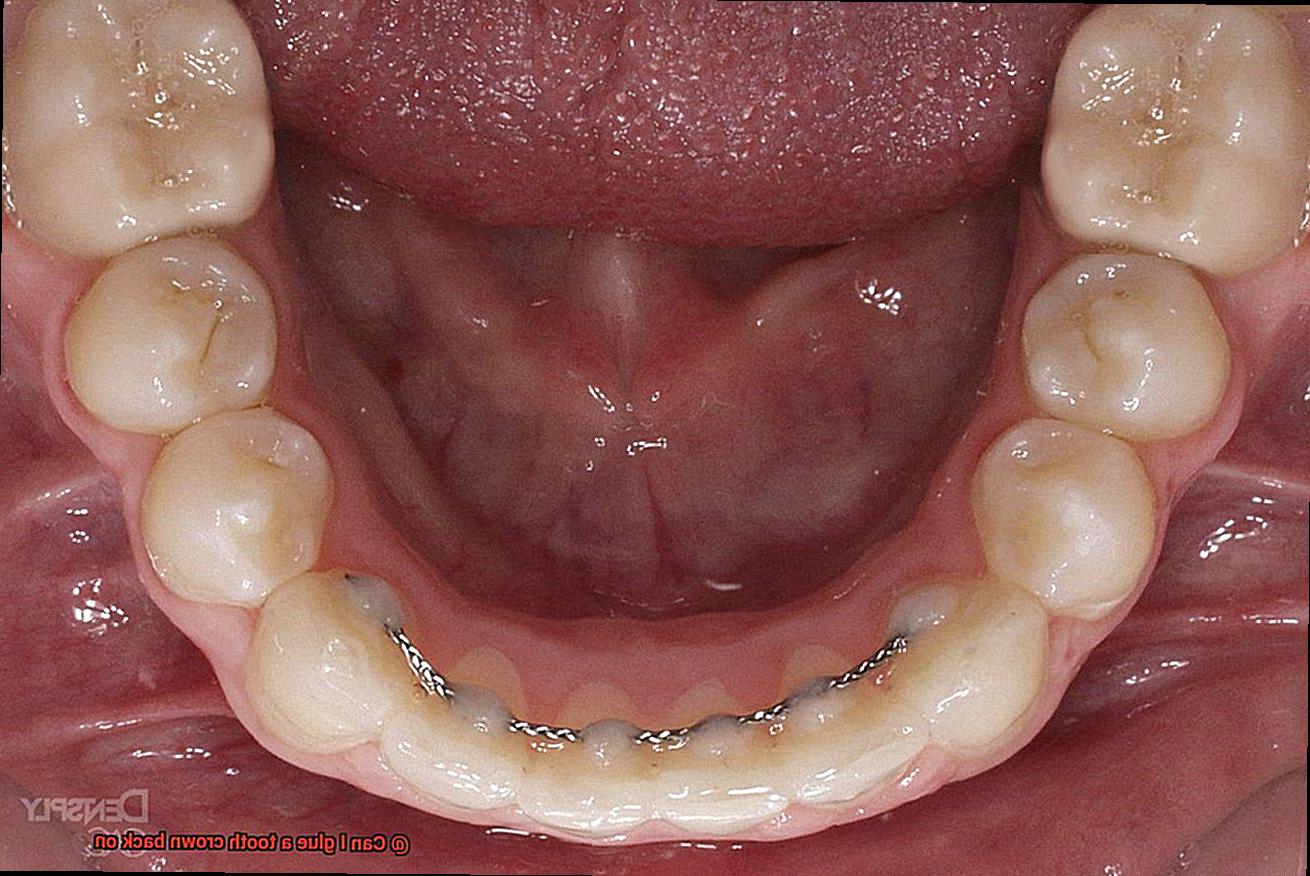
Trauma or injury to the mouth can be a sudden cause of a loose or fallen crown. Accidents, falls, or blows to the face can disrupt the crown-tooth bond, potentially fracturing the crown or damaging the underlying tooth structure.
Individuals who grind or clench their teeth are at higher risk of experiencing loose or fallen crowns. The constant pressure and friction exerted during grinding or clenching gradually weaken the bond between the crown and the tooth.
Over time, age and wear can take their toll on dental restorations, including crowns. The materials used in crowns may deteriorate, resulting in a weakened bond with the underlying tooth structure.
Finally, improper crown placement by a dentist can also be a cause of a loose or fallen crown. If not properly fitted or bonded to the tooth, a crown is more likely to become dislodged.
In order to prevent loose or fallen tooth crowns, it is essential to address these underlying causes. Regular dental check-ups and good oral hygiene practices can help detect and prevent dental decay.
Wearing a custom-made mouthguard can protect teeth from trauma caused by accidents or bruxism. Dentists should ensure proper placement of crowns, ensuring they fit snugly and securely on the tooth.
Can I Glue a Tooth Crown Back On?
When a tooth crown becomes loose or falls off, it’s crucial to take action quickly to prevent further damage. Many people wonder if they can simply glue the crown back on themselves. However, there are several reasons why this is not recommended.
Firstly, temporary dental adhesives available over-the-counter are not designed for long-term use or for fixing permanent dental restorations like crowns. These adhesives lack the strength of the dental cement used by professionals and may not provide a secure bond that can withstand normal chewing forces.
Furthermore, attempting to glue a tooth crown back on without proper cleaning and preparation can lead to bacteria buildup and potential oral health issues. It’s essential to ensure that both the crown and the tooth are clean and free of debris before attempting any reattachment.
Additionally, dentists have the expertise, materials, and tools required to ensure a secure and long-lasting bond between the crown and the tooth. They can assess the situation, determine the cause of the crown coming off, and provide appropriate treatment. In many cases, they can reattach the crown using dental cement or recommend a replacement if necessary.
Lastly, trying to glue a tooth crown back on yourself without professional guidance may result in further damage to the tooth or crown. This could lead to more extensive and expensive dental work in the future.
Cleaning the Crown and Tooth Before Gluing
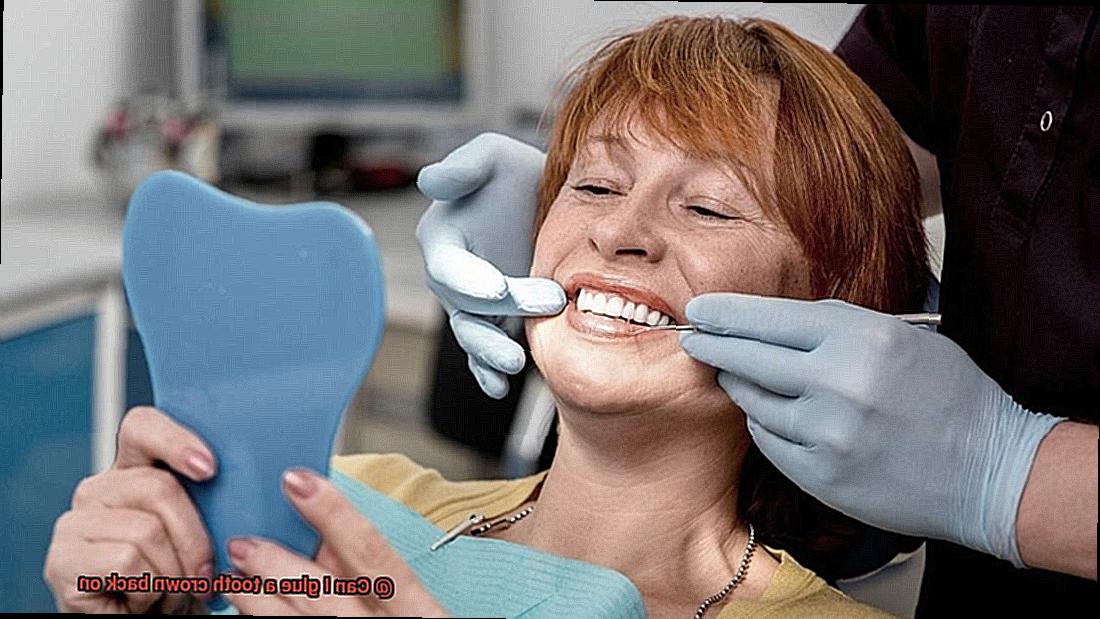
Cleaning the crown and tooth before gluing is not a step to be overlooked. It may seem like a simple task, but it plays a crucial role in the overall success of the restoration process. By taking the time to properly clean both the crown and tooth, you are setting the stage for a strong and durable bond.
Imagine trying to glue two surfaces together that are covered in dirt and debris. The adhesive would struggle to stick properly and the bond would be weak at best. The same principle applies to gluing a crown back onto a tooth. If there is any residue or plaque present on either surface, it can interfere with the adhesive and compromise the longevity of the crown.
Cleaning the crown involves removing any debris or residue that may have accumulated. This can be done by gently rinsing it under running water to remove food particles or other substances. Then, using a soft-bristled toothbrush and mild soap or toothpaste, brush all sides of the crown, including the inside where it will come into contact with the tooth. This thorough cleaning ensures that the crown is free from any plaque or bacteria that could affect the bond.
Next, it’s important to prepare the tooth for bonding. Brushing the tooth with a soft-bristled toothbrush and toothpaste helps remove any plaque or bacteria from the area where the crown will be placed. Rinse the tooth thoroughly to ensure that no residual toothpaste or debris remains.
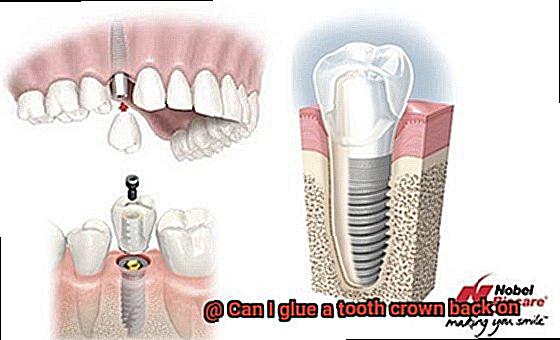
To further clean and disinfect the tooth, your dentist may recommend using an antibacterial mouthwash or hydrogen peroxide solution. These additional cleaning steps can help create an optimal environment for bonding.
Once both surfaces are clean, it’s crucial to keep them dry before applying adhesive. Moisture can interfere with the bonding process and weaken the bond between the crown and tooth. Use a clean, dry cotton swab or gauze to gently dry both surfaces, being cautious not to introduce any oils or contaminants.
Dental Adhesive or Temporary Cement for Gluing
When it comes to gluing a tooth crown back on, you have two options: dental adhesive or temporary cement. But which one should you choose? Let’s break it down.
Dental adhesive is the go-to choice for dentists when it comes to securely attaching crowns to teeth. It’s a permanent solution that creates a durable bond between the crown and the tooth. Made of a strong bonding agent, dental adhesive provides a long-lasting fix that can withstand the test of time. However, it requires proper application by a dental professional and can only be removed by a dentist.
On the other hand, temporary cement is a quick fix that you can use at home until you can see a dentist. It’s typically made of a softer material that allows for easy removal of the crown when necessary. This makes it a suitable option for temporary fixes or situations where the crown needs to be easily removed for adjustments or repairs.
Both dental adhesive and temporary cement come in different forms, such as paste or powder, and require mixing before use. It’s crucial to follow the manufacturer’s instructions to ensure proper application and effectiveness.
Remember, dental adhesive or temporary cement can only provide temporary relief. They are not substitutes for professional dental care. It’s always recommended to visit a dentist as soon as possible to address any issues with your tooth crown.
Applying the Adhesive or Cement Properly
Applying the adhesive or cement properly is crucial when attempting to glue a tooth crown back on. This step requires precision and attention to detail to ensure a successful reattachment.
Firstly, it is important to clean both the tooth and the crown before applying the adhesive. Use a toothbrush and toothpaste to gently clean the tooth surface, paying extra attention to the area where the crown will be placed. Rinse thoroughly with water and ensure that all debris and plaque are removed.
Next, carefully dry the tooth and crown using a clean, dry cloth or tissue. It is essential for both surfaces to be completely dry before applying the adhesive. Moisture can interfere with the bonding process and compromise the strength of the bond.
Now, it’s time to apply the adhesive or cement. Depending on the type of adhesive or cement being used, follow the manufacturer’s instructions for application. Typically, a small amount of adhesive is applied to the inside of the crown, ensuring that it covers the entire inner surface evenly. Avoid using too much adhesive as it can lead to excess material oozing out when the crown is placed on the tooth.
Once the adhesive is applied, carefully position the crown back onto the tooth. Ensure that it is aligned properly and fits snugly without any gaps. Apply gentle pressure to secure it in place, allowing the adhesive to bond effectively.
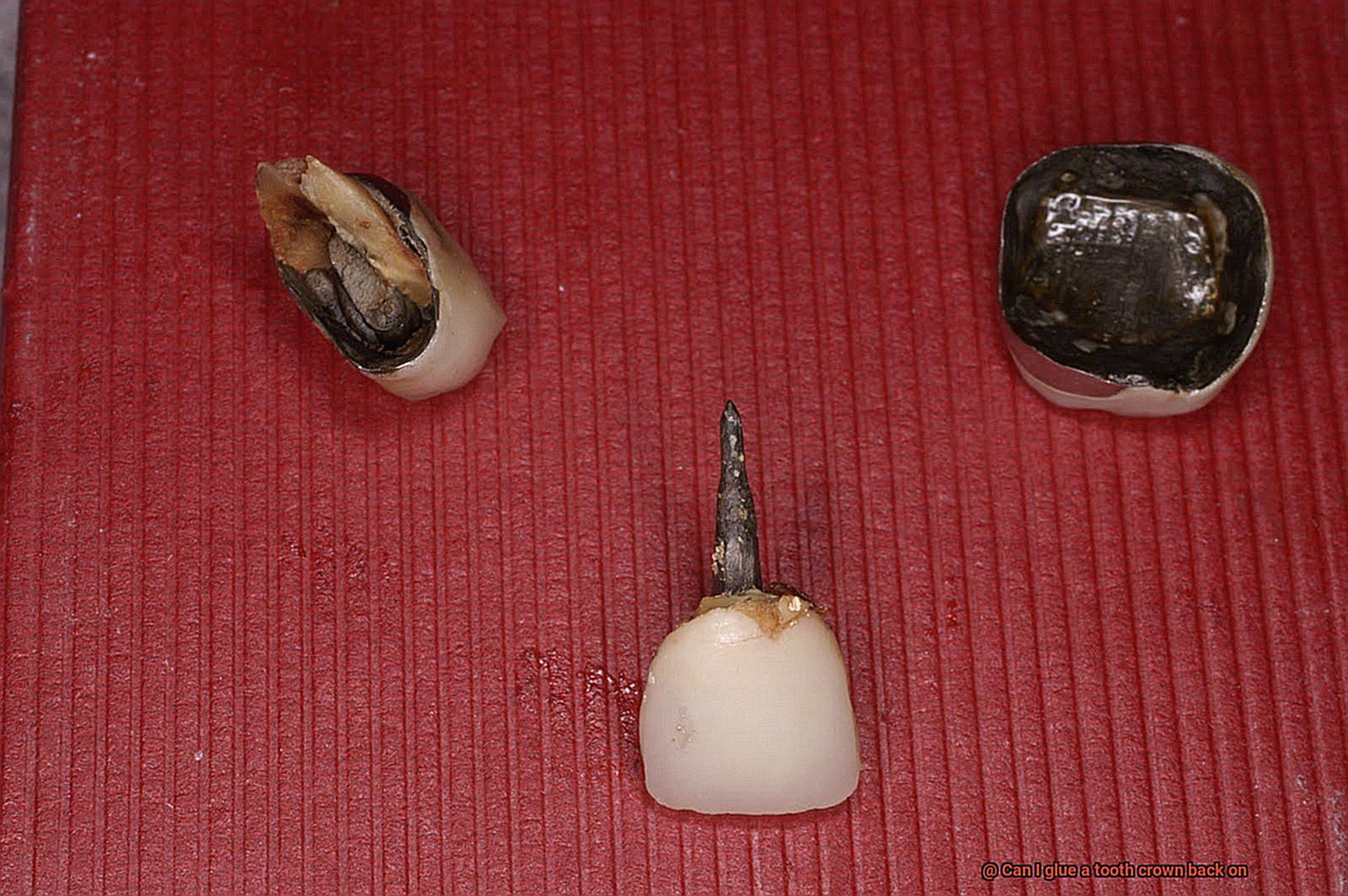
After placing the crown, any excess adhesive should be removed immediately. Use a dental floss or interdental brush to gently remove any excess material around the gumline or in between teeth. Leaving excess adhesive can lead to gum irritation or difficulty in flossing and cleaning around the crown.
Finally, allow sufficient time for the adhesive or cement to fully bond before resuming normal eating and oral hygiene practices. Follow your dentist’s instructions regarding any specific precautions or restrictions during this bonding period.
It is important to note that while gluing a tooth crown back on may provide a temporary solution, it is not a substitute for professional dental treatment. It is essential to visit your dentist as soon as possible to evaluate the situation and determine the best course of action. Your dentist will assess the crown and tooth, ensuring that they are in good condition and fit properly before reattaching them.
Is Gluing a Tooth Crown Back On Permanent?
Gluing a tooth crown back on is generally not considered a permanent solution. Dental glue is not designed to provide long-term stability, and over-the-counter dental adhesives lack the strength and durability required for a long-lasting bond. Additionally, attempting to glue a crown back on without proper cleaning and preparation can lead to complications such as poor adhesion and potential damage to the tooth or crown.
It is important to seek professional dental care if your crown becomes loose or falls off. Dental professionals use dental adhesive or cement to secure and durable bond between the crown and the tooth. They will also thoroughly clean the underlying tooth surface and remove any residual cement or debris before reattaching the crown.
Gluing a crown back on without professional guidance can make it difficult for your dentist to assess and treat any underlying issues that may have caused the crown to come loose. A loose crown can indicate problems such as decay, tooth fracture, or an ill-fitting crown, all of which need to be addressed by a dental professional.
Seeking Professional Dental Care for Long-Term Solutions
Seeking professional dental care is crucial when it comes to addressing the issue of a dislodged or loose tooth crown. While it may be tempting to try DIY methods like gluing the crown back on, it is important to understand that these temporary solutions may not provide long-term results.
When a tooth crown becomes loose or falls off, it is typically an indication of an underlying problem such as tooth decay, gum disease, or a poorly fitting crown. Gluing the crown back on without addressing these issues can lead to further complications and potential damage to the tooth or surrounding structures.
Visiting a dentist is the first step in seeking professional dental care for a loose or dislodged tooth crown. The dentist will thoroughly examine the tooth and the crown to determine the cause of the problem. X-rays may also be taken to assess the condition of the underlying tooth structure.
Based on the examination and diagnosis, the dentist will recommend an appropriate treatment plan. In some cases, if the crown is undamaged and can be reattached, the dentist may clean and disinfect both the crown and the tooth before carefully gluing it back in place. However, this is typically a temporary solution until further treatment can be performed.
If there are underlying issues such as decay or gum disease, the dentist will address these problems before reattaching the crown. This may involve procedures such as dental fillings, root canal treatment, or gum therapy. Resolving these issues ensures that the crown has a stable foundation and reduces the risk of future complications.
It is important to note that attempting to glue a tooth crown back on without professional guidance can lead to improper placement, which can affect your bite alignment and cause discomfort or pain. Additionally, using over-the-counter adhesives may not provide a strong enough bond for long-term stability.
Seeking professional dental care ensures that you receive proper treatment tailored to your specific needs. Dentists have the expertise and knowledge to address underlying issues and provide long-term solutions for a loose or dislodged tooth crown.
Regular dental check-ups are essential in preventing loose crowns and other dental problems. Dentists can identify and address any issues before they become major problems, saving you time, money, and potential discomfort in the long run.
OdhAX7Sd0SY” >
Conclusion
In conclusion, it is strongly advised against attempting to glue a tooth crown back on yourself. While it may appear as a quick fix, this DIY approach can lead to a host of further complications.
First and foremost, over-the-counter dental adhesives are simply not designed for long-term use or the reattachment of permanent dental restorations like crowns. These products lack the strength and durability of professional-grade dental cement, leaving you with an insecure bond that may not withstand the normal forces of chewing.
Furthermore, attempting to reattach a crown without proper cleaning and preparation can result in the buildup of harmful bacteria and potential oral health issues. It is essential to ensure that both the crown and underlying tooth are thoroughly cleaned and free from debris before any reattachment is attempted.
Lastly, dentists possess the expertise, materials, and tools necessary to guarantee a secure and long-lasting bond between the crown and tooth. They can assess the condition of both the crown and underlying tooth, meticulously clean and prepare the surfaces, and utilize dental adhesive to firmly secure the crown back in place.
Therefore, if your tooth crown becomes loose or completely falls off, it is crucial to seek immediate dental attention. Dentists have specialized knowledge and experience in reattaching crowns using appropriate techniques and materials. They will conduct a thorough examination of your teeth, address any underlying issues that may have caused the crown to loosen, and recommend an appropriate treatment plan.
Remember, when it comes to addressing issues with your tooth crown, seeking professional dental care is always your best option. Regular dental check-ups are also vital in preventing loose crowns and other dental problems.

